
Which are the Best Patterns for Keno?
What is Keno?
Keno is a hugely popular casino game that has its origins in 7th century China. This unique game asks you to pick up to 20 numbers, usually from 1-80, that will be drawn in a lottery-style system. The potential payouts will depend on how many numbers you have selected, against the 20 drawn out.
Unlike bingo, this game is played against the house, with your aim being to match as many of your numbers to those called as possible.
- For example, if you pick six numbers and three are called, you will win more than if you picked nine numbers and six were called.
Understanding Keno
Before we dive deeper, let's quickly recap how Keno works:
- You choose between 1 and 20 numbers from a pool of 80.
- The casino randomly draws 20 numbers.
- The more of your numbers match the drawn numbers, the bigger your win.
Read our dedicated article to find out more about how playing Keno.
Is There a Pattern to Keno that Win?
Keno is predominantly a game of chance with no true pattern to it. However, there are plenty of numbers combinations that seasoned players swear by, whether that be playing with a defined amount of numbers on each card, or focusing on sequential numbers.
When playing Keno, selecting numbers in patterns is often more about personal preference and superstition rather than strategy since Keno is a game of chance with no guaranteed winning patterns. However, some players like to use specific patterns for fun or to follow certain beliefs.
Here are some common patterns people use when selecting numbers in Keno:
Number-Based Patterns
Hot and Cold Numbers
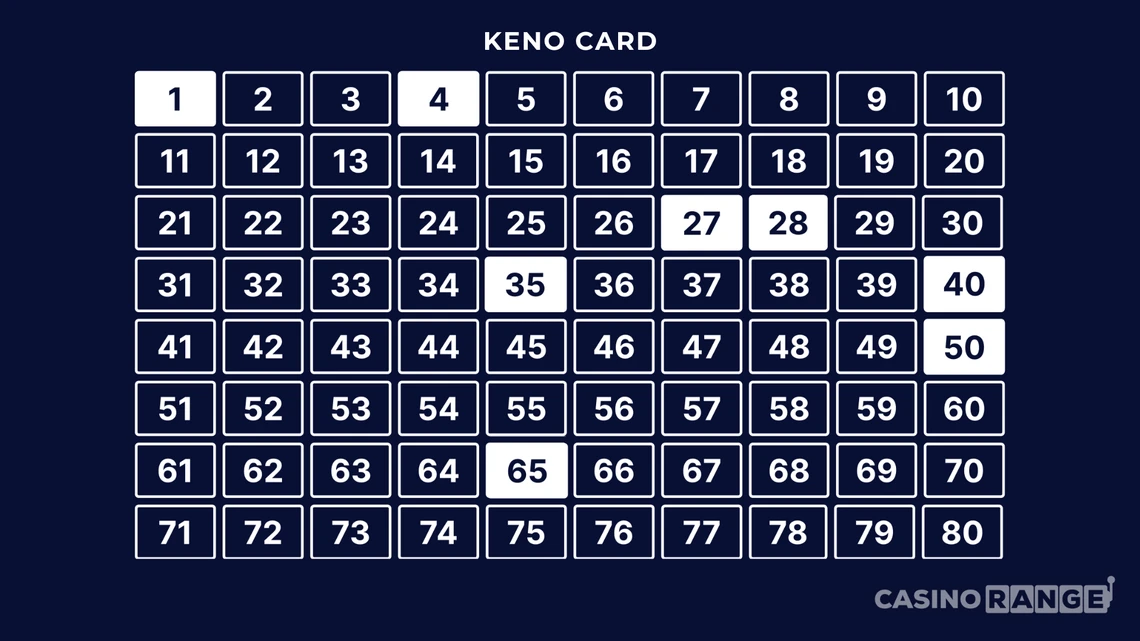
Some players believe in tracking which numbers have been drawn frequently (hot) or infrequently (cold). Some Keno players study the game's history to identify "hot" numbers (those that have been drawn frequently) and "cold" numbers (those that haven't appeared in a while). They might create patterns based on these.
- For many players the best strategy to utilise when playing Keno can often be to follow the ‘hot numbers’ - meaning the numbers that have been called most often. According to historical statistics, the most common Keno numbers are 1, 2, 4, 23, 27, 34, 35, 40, 50, 65 and 72 .
This is more of a theory than a properly thought out strategy, with each individual game of Keno being based entirely on chance. But if you’re looking for Keno pattern inspiration, the ‘hot numbers’ could be a good place to start!
Consecutive Numbers
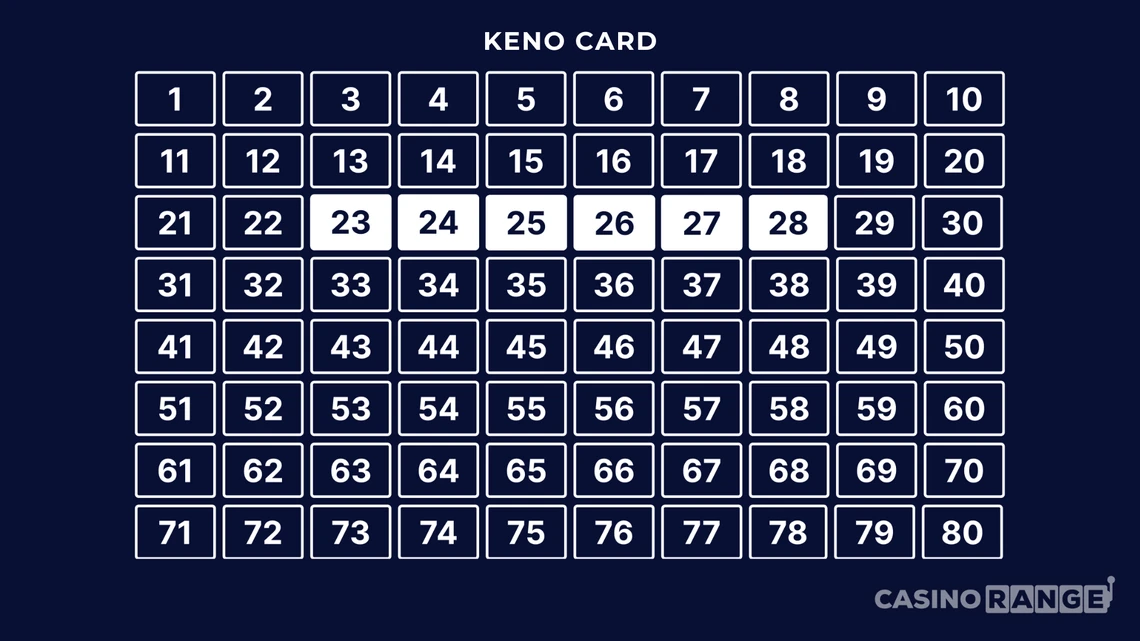
- Choosing numbers that are sequential, like 1, 2, 3, 4, 5.
Odd or Even Numbers
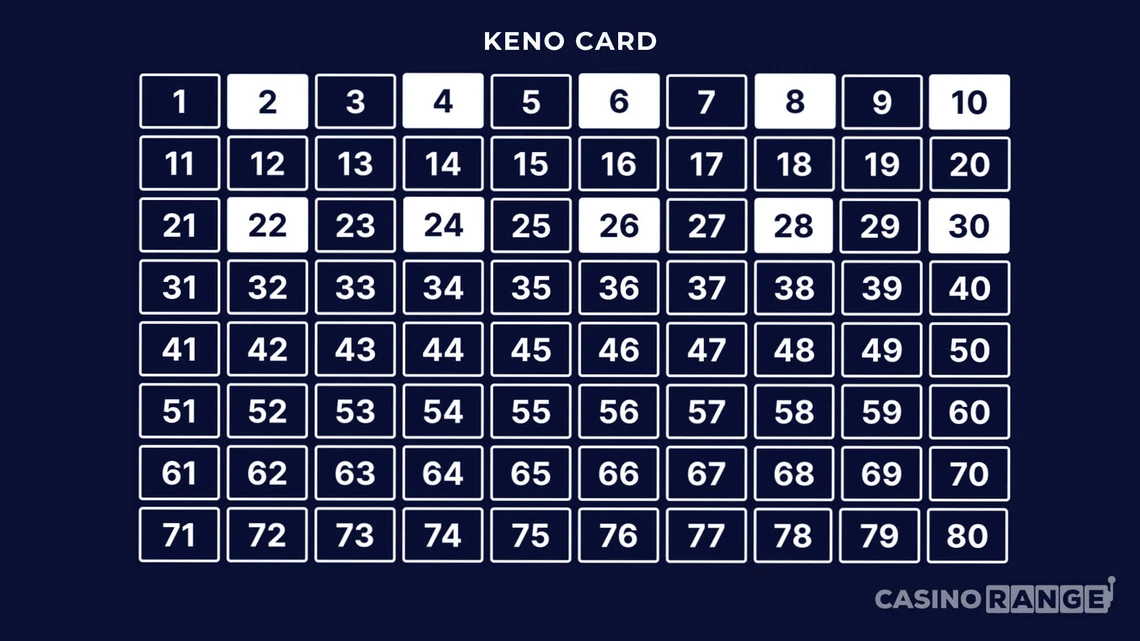
- Selecting only odd or even numbers.
High or Low Numbers
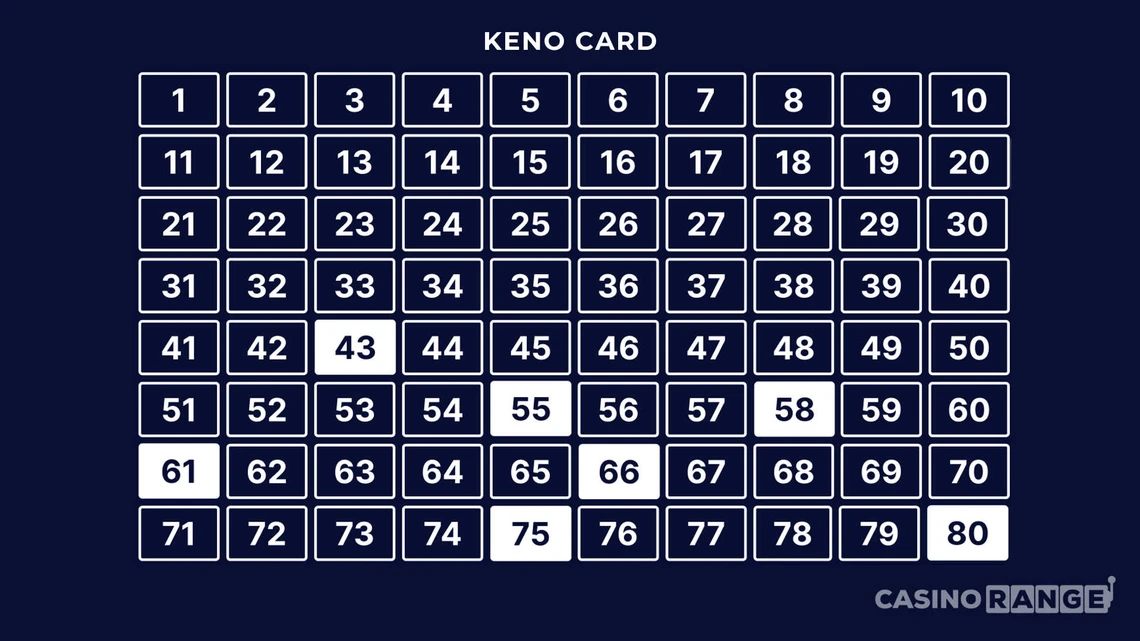
- Focusing on numbers in the lower or higher half of the number pool.
Lucky/favorite Numbers
- Using personal numbers combinations like birthdays, anniversaries, or favorite digits. Many players use significant dates, like birthdays or anniversaries, which can create a pattern based on the numbers in those dates.
Shape-Based Patterns
Diagonal Lines
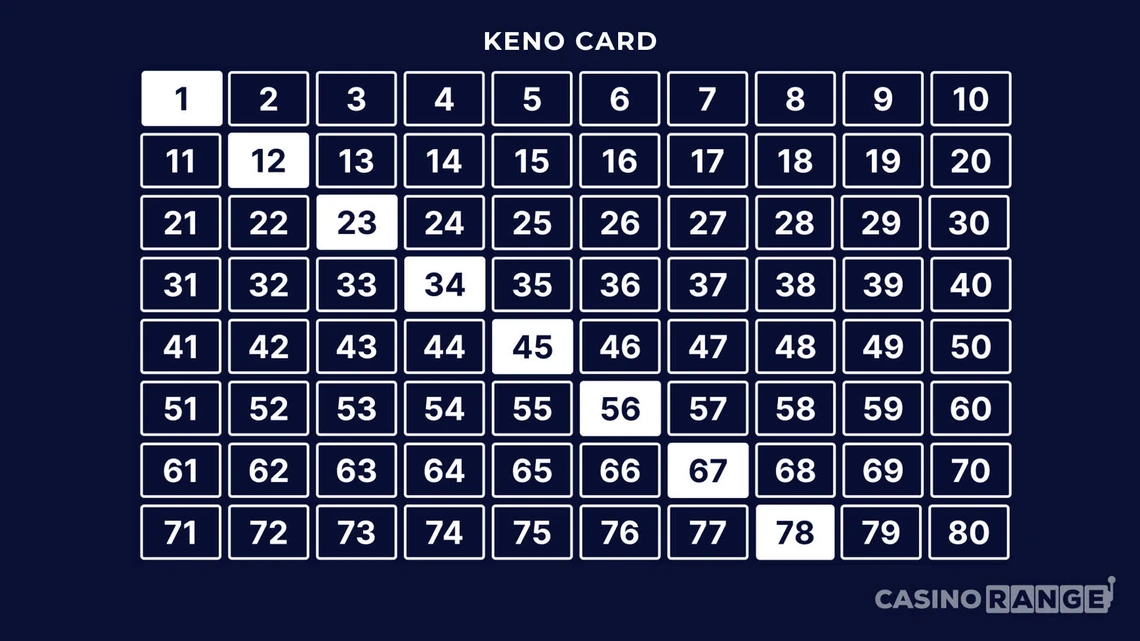
- Selecting numbers that form a diagonal line on the Keno card. Players often choose numbers in a diagonal line across the Keno board. This pattern covers a wide range of numbers across different sections of the board.
Vertical or Horizontal Lines
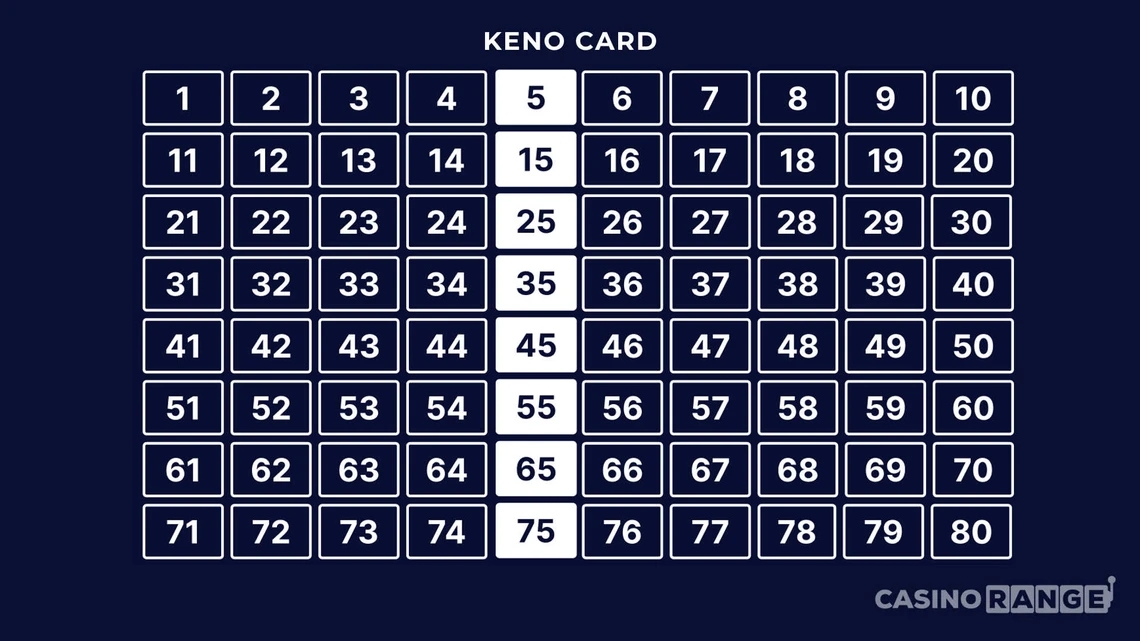
- Selecting all the numbers in a straight vertical or horizontal line is another popular pattern. This approach keeps your numbers within a specific range, which some players find appealing.
Squares or Rectangles
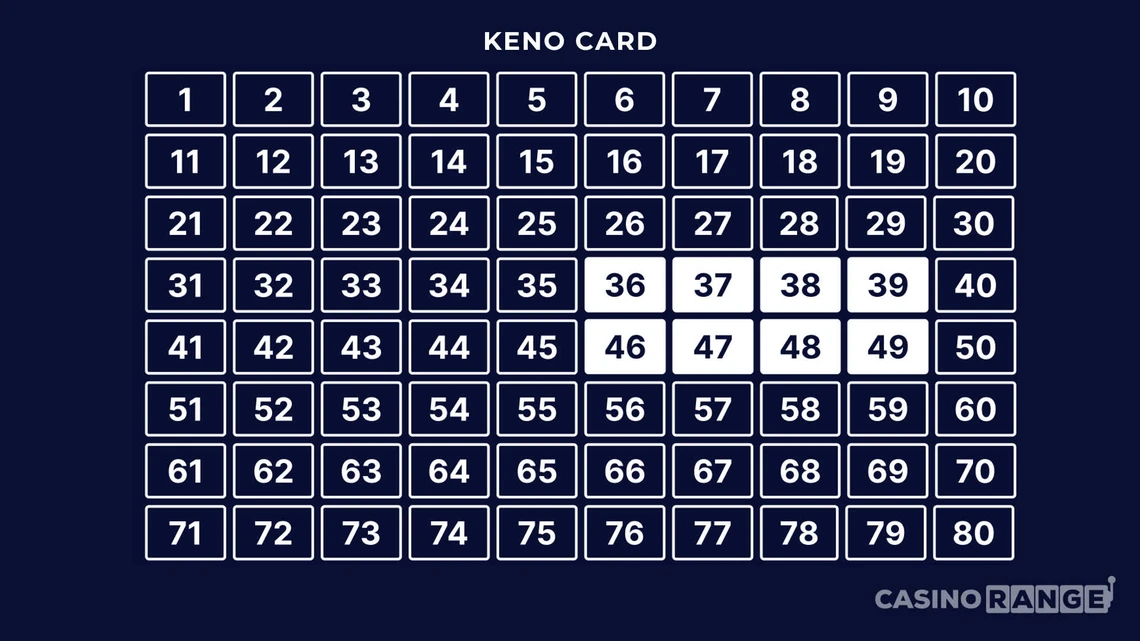
- Choosing numbers that create a square or rectangular shape.
Corners
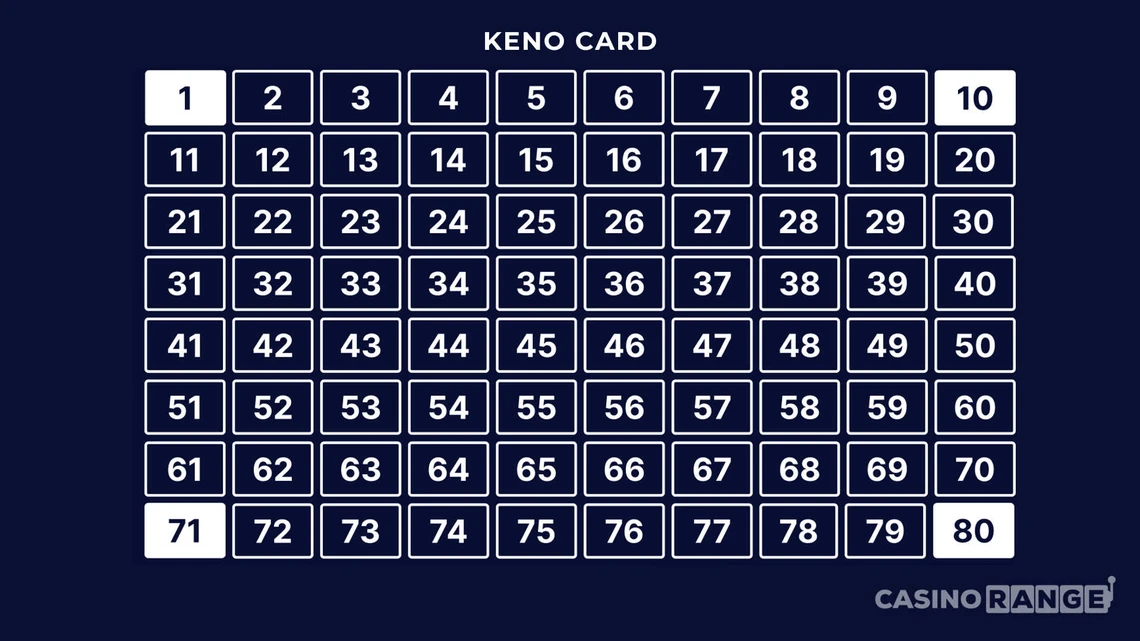
- Selecting numbers that form the corners of the Keno board is another common strategy. For example, you might choose the four corners: 1, 10, 71, and 80.
Symmetry
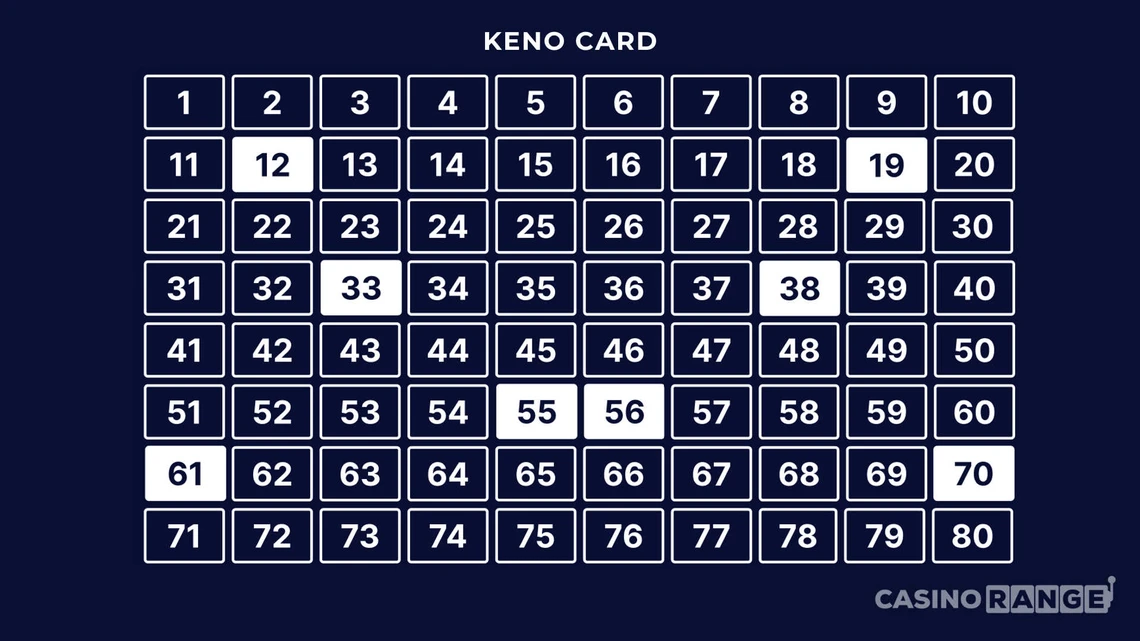
- Some players like to choose numbers symmetrically across the board, such as creating mirror images of number sets on either side of the board.
Multi-Card Keno Pattern
This kind of pattern is played with multiple tickets. Playing multiple cards at the same time allows for better coverage of the numbers that will come out. The two most popular multi-card patterns are:
Four Cards Keno Pattern
- Consider splitting each of the 4 cards into clusters, and betting on 6 to 7 numbers per cluster. With this method you cover a good portion of the numbers that will come out.
20 Cards Keno Pattern
- The principle is the same as for the four cards, you select up to 20 different sets of numbers on each card. Strategies focus on maximizing coverage while managing risk.
- With this approach it is advisable not to exceed 4/5 spots covered per card, beyond that the calculation of combinations for a good coverage becomes complicated, and you also risk replaying the same numbers several times.
- That said, you can vary the combinations and are not obliged to systematically play the same number of spots on each card.
- For good coverage, you can still operate in clusters, to avoid having the same spots several times on several maps.
Keno Wining Patterns: A Myth or a Method?
The short answer is: There's no guaranteed "best" pattern or secret for wining at Keno.
Keno is a game of chance, and while some players swear by certain patterns or number combinations, there's no mathematical or statistical evidence to support their claims.
The Truth About Keno Patterns
- Randomness: Keno is based on random number generation. Each draw is independent of the previous one.
- No Memory: The game doesn't "remember" past results.
- System Failures: While there have been rare instances of system failures leading to predictable patterns, these are exceptions, not the rule.
- Your chances of hitting a perfect 20 is 1 in 3.5 quintillion, but you can realistically hit five numbers about 23% of the time, so avoid patterns with more than 10 spots covered, because the probability that they are all drawn is very low.
Is There a Trick to Winning Keno?
There is no obvious way to guarantee a win in this game of chance, but that’s not to say there are not plenty of strategies you could implement.
- Play between four and seven numbers to keep your chances of winning and the variance to a reasonable degree.
- Never play above 10 numbers : Your chances of hitting a perfect 20 is 1 in 3.5 quintillion, but you can realistically hit five numbers about 23% of the time.
- When playing online Keno, choosing a casino or the game that offers the best odds can be very important
What Gives you the Best Chance to Win at Keno?
In any game of Keno, the more numbers you pick, the better your chances of claiming some sort of return.
You could chase those incredible seven-figure wins that would come with a 20-number hit, but most players prefer to play with 4-8 numbers, as they give you the best chance to scoop solid returns.
Final Thoughts
Keno can seem like a simple number-picking game, but there is plenty of nuance to it, especially when you consider how your strategy can affect potential payouts. While they will not inherently impact your chances of winning, finding an effective Keno pattern is always important, as it increases your chances of playing multiple games in quick succession. Whether you prefer sequential numbers, lucky numbers, or the hot numbers, there’s plenty of different patterns you could consider.
With the amount of numbers you choose - up to 20 - affecting your potential payout, it is important to find the right balance. We would all love that incredible seven-figure win for hitting a perfect 20, but the odds of that happening are eye-watering - quite literally at 1 in 3.5 quintillion! In short, you need to find your own approach for this simple-yet-complex casino classic.

Author
Gambling Consultant
